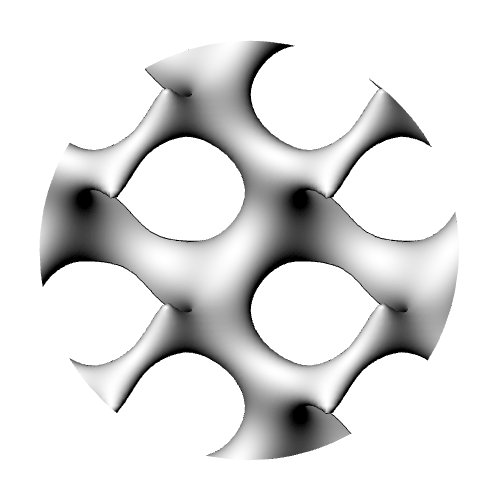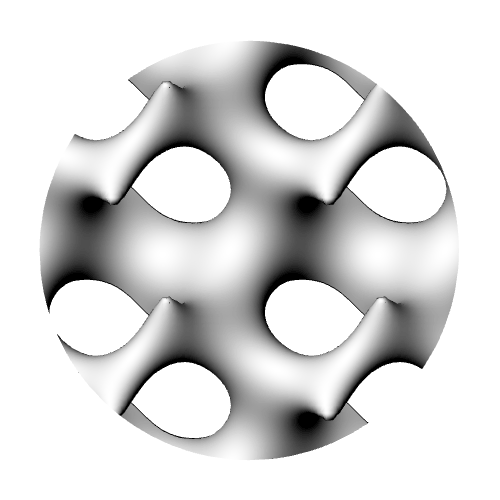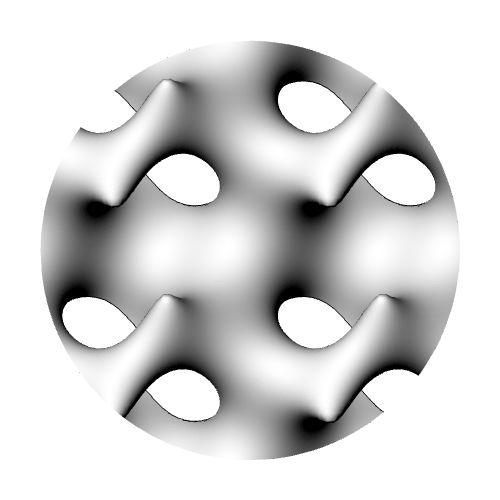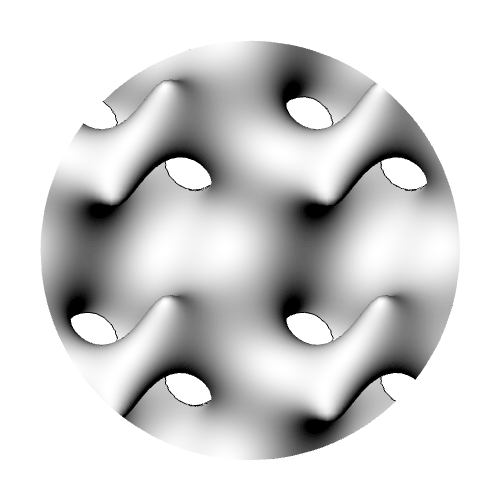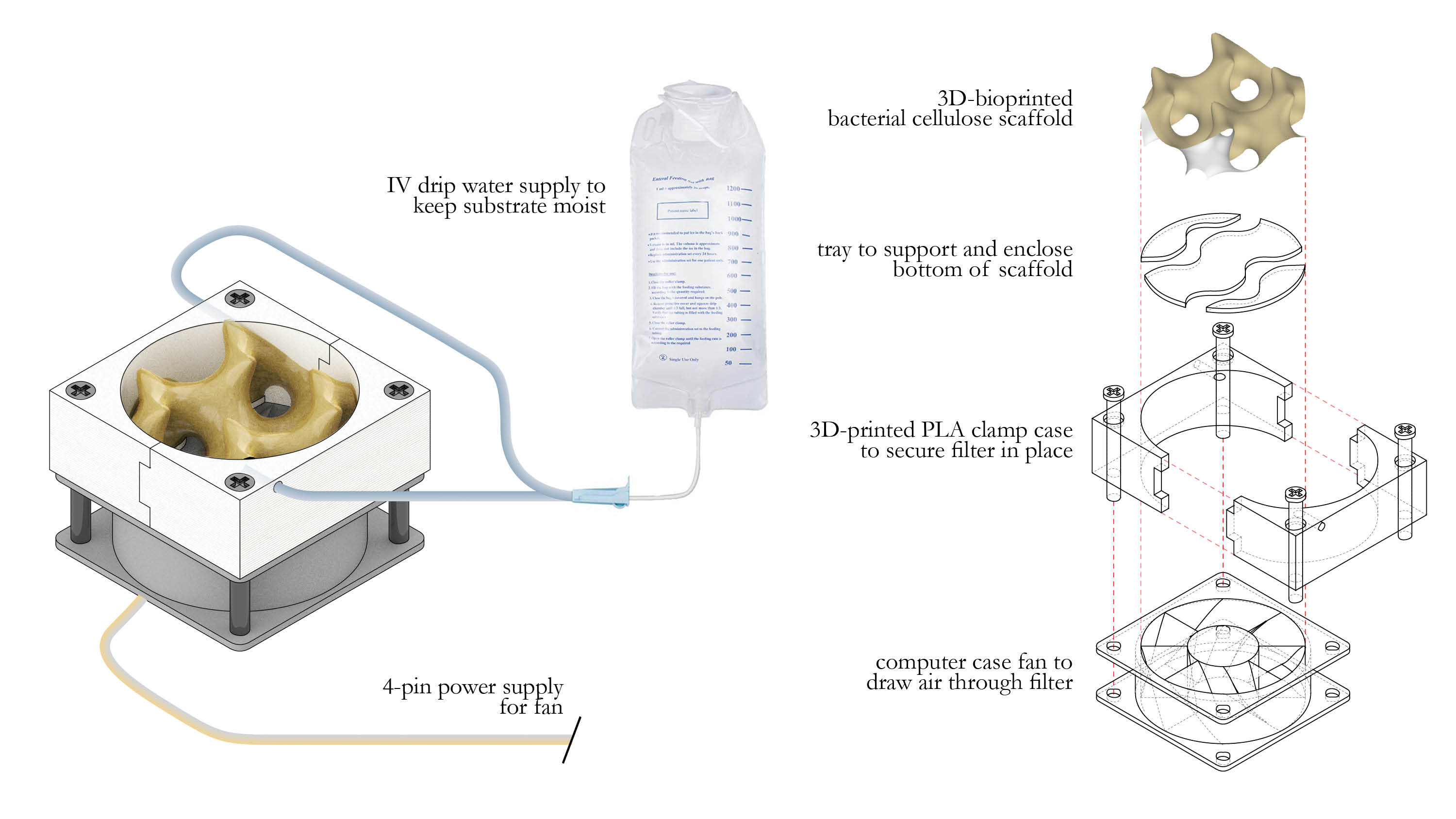
Indoor VOC Biofilter
What
Where
When
For
With
Where
When
For
With
Indoor Filter
Berkeley, CA
2021
Arch 249
Fiona Kaech
Effie Jia
Elaine Forbush
Berkeley, CA
2021
Arch 249
Fiona Kaech
Effie Jia
Elaine Forbush
Inspired by the COVID pandemic, this project seeks to find new biological synergies that can be deployed indoors to protect us from the VOCs that emerge from the urban environment. The filter is a speculative project that seeks to innovate a system that can sequester and neutralize both hydrophyllic and hydrophobic VOCs.
An exterior membrane is bioprinted with bacterial cellulose, which has been shown to neutralize hydrophilic VOCs. Within this membrane is a substrate of brown rice flour and vermiculite to be innoculated with oyster mushroom spores which germinate and colonize the substrate over a about a week. Once fully colonized and consumed, the mycellium turns to the bacterial cellulose membrane and consumes it to breach the surface. Exposed to the exterior, the mycellium begins to neutralize hydrophobic VOCs as it metabolizes them for energy. Eventually, the mycellium will produce edible fruits, after which their resources will have been exhausted and the filter can be replaced.
The membrane takes on a tapering gyroidal shape in order to produce a porous volume with a high degree of surface area for VOC entrapment. This volume was put through an initial computational fluid dynamic anaysis which shows a heatmap of pressure against the surface where air is simulated to pass through it at 1.5 m/s with an average 2.85 e-1 PA.
An exterior membrane is bioprinted with bacterial cellulose, which has been shown to neutralize hydrophilic VOCs. Within this membrane is a substrate of brown rice flour and vermiculite to be innoculated with oyster mushroom spores which germinate and colonize the substrate over a about a week. Once fully colonized and consumed, the mycellium turns to the bacterial cellulose membrane and consumes it to breach the surface. Exposed to the exterior, the mycellium begins to neutralize hydrophobic VOCs as it metabolizes them for energy. Eventually, the mycellium will produce edible fruits, after which their resources will have been exhausted and the filter can be replaced.
The membrane takes on a tapering gyroidal shape in order to produce a porous volume with a high degree of surface area for VOC entrapment. This volume was put through an initial computational fluid dynamic anaysis which shows a heatmap of pressure against the surface where air is simulated to pass through it at 1.5 m/s with an average 2.85 e-1 PA.





